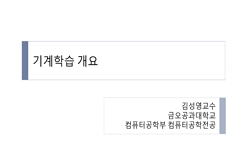본 연구에서는 벌크금속유리 소재의 자기냉각 효과값을 예측하기 위해서 XGB 모델을 이용하였다. 파이썬 모듈인 ‘Pymatgen’과 ‘ M atminer’를 통해서 조성기반 특성인자 174개를 얻었으며 과...
http://chineseinput.net/에서 pinyin(병음)방식으로 중국어를 변환할 수 있습니다.
변환된 중국어를 복사하여 사용하시면 됩니다.
- 中文 을 입력하시려면 zhongwen을 입력하시고 space를누르시면됩니다.
- 北京 을 입력하시려면 beijing을 입력하시고 space를 누르시면 됩니다.

벌크금속유리 합금의 자기냉각효과 예측을 위한 유전 알고리즘 기반 기계학습 모델 최적화 = Optimization of a Genetic Algorithm-Based Machine Learning Model for Predicting the Magnetocaloric Effect of Bulk Metallic Glasses
한글로보기부가정보
국문 초록 (Abstract)
본 연구에서는 벌크금속유리 소재의 자기냉각 효과값을 예측하기 위해서 XGB 모델을 이용하였다. 파이썬 모듈인 ‘Pymatgen’과 ‘ M atminer’를 통해서 조성기반 특성인자 174개를 얻었으며 과대적합을 줄이기 위해서 적절한 특성인자를 탐색하는 방법을 적용하였다. 첫번째 Pearson correlation coefficient를 확인하여 상관 관계가 높은 특성인자를 줄여 104개의 특성인자를 얻었다. 두번째 XGB 모델에서 제공하는 특성인자 중요도 방법을 통해서 회귀성능 결과를 바탕으로 40개의 주요 특성인자를 찾았다. 마지막으로 2단계 유전알고리즘을 통해서 최종 12개의 최적화된 특성인자를 찾았으며 이를 통해서 과대적합을 방지하고 향상된 자기냉각효과 예측성능을 확인할 수 있었다.
다국어 초록 (Multilingual Abstract)
This study used an XGB model to predict the magnetocaloric effect values of bulk metallic glass materials. A total of 174 composition-based features were obtained using the Python modules ‘Pymatgen’ and ‘Matminer’, and a feature selection meth...
This study used an XGB model to predict the magnetocaloric effect values of bulk metallic glass materials. A total of 174 composition-based features were obtained using the Python modules ‘Pymatgen’ and ‘Matminer’, and a feature selection method was applied to reduce overfitting. First, by examining the Pearson correlation coefficient, we reduced the number of features with high correlations, resulting in 104 features. Second, using the feature importance method provided by the XGB model, 40 key features were identified based on the regression performance results. Finally, through a two-stage genetic algorithm, 12 optimized features were selected, which helped prevent overfitting and improve the prediction performance of the magnetocaloric effect.
동일학술지(권/호) 다른 논문
-
- 한국자기학회
- 정재웅
- 2024
- KCI등재,ESCI
-
비정질 [CoSiB/Pt] 다층 박막의 수직 자기 이방성 및 홀 효과 개선을 위한 CoSiB의 두께와 열처리 온도 최적화
- 한국자기학회
- 김건희
- 2024
- KCI등재,ESCI
-
내전형 모터의 영구자석 편측 오버행 구조를 통한 고효율화에 대한 연구
- 한국자기학회
- 정재웅
- 2024
- KCI등재,ESCI
-
교자성: 기본 개념, 실험적 발견, 그리고 향후 연구 방향
- 한국자기학회
- 국윤상
- 2024
- KCI등재,ESCI




 DBpia
DBpia






